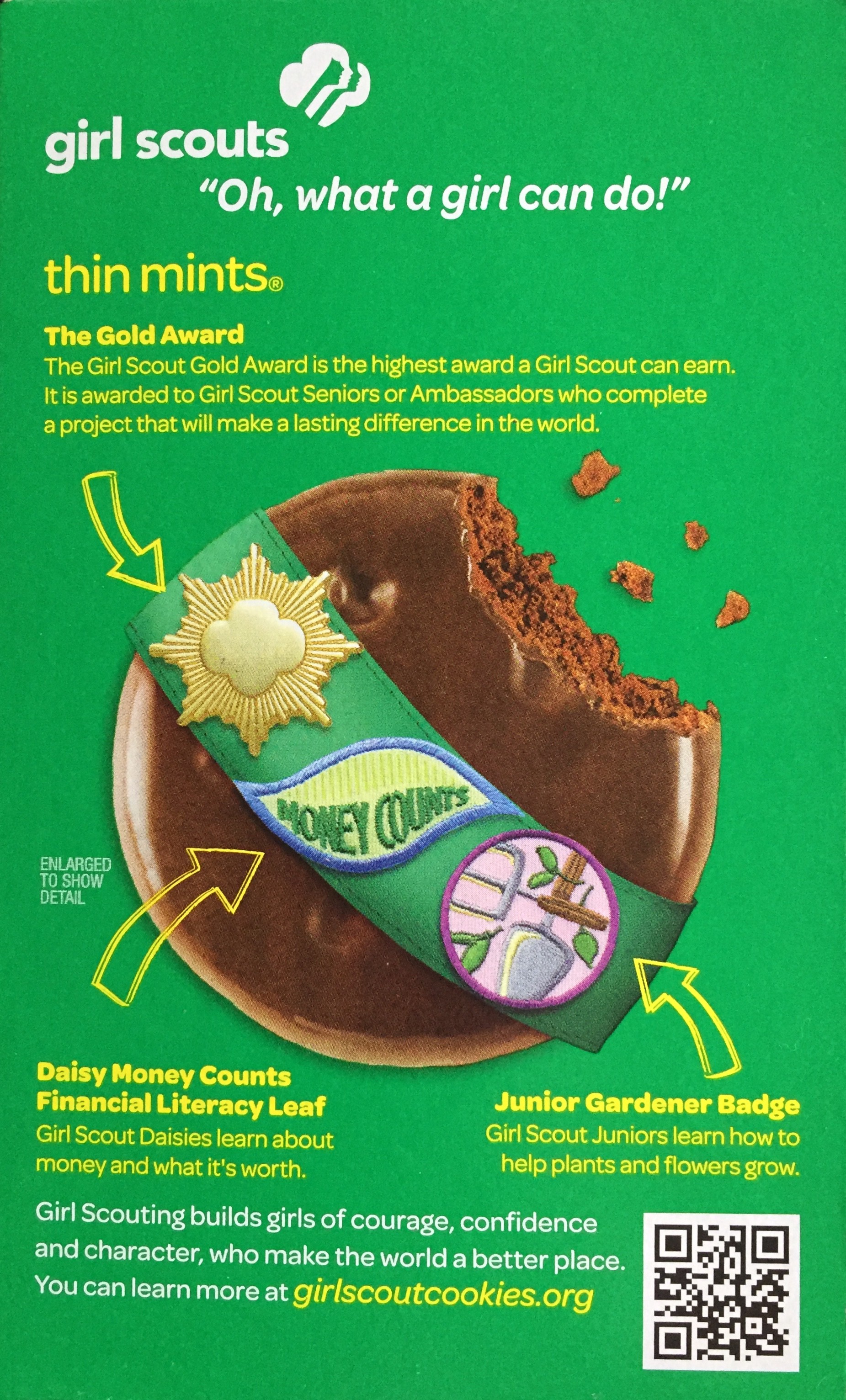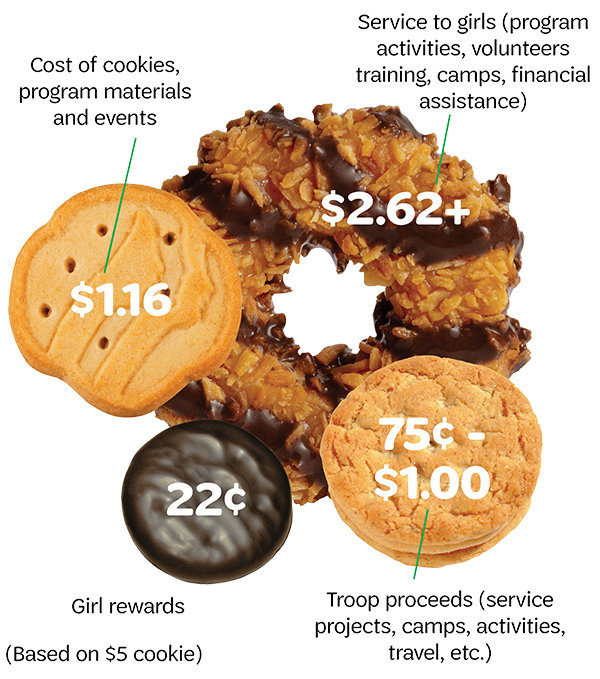By Jennifer Kaplan, Former Girl Scout Troop Leader and Troop Cookie Chair for Troop #33533 in Berkeley, CA

Last week, Girl Scouts across America unfolded their tables, brought out their red wagons and began selling Girl Scout cookies. For many parents, it was a day of dread.
Every year, for six weekends starting in February, or GO! Day in Girl Scout parlance, we adults are expected to perform the same tedious duty. As our girls hawk cookies, we drink Starbucks, lurk far enough away to provide autonomy but close enough to stand guard over the money box.
To understand the phenomenon of the Girl Scout cookies, you need to go back to 1936 when a the Girl Scouts first licensed commercial bakers. 125 troops launched cookie sales that year and an American ?tradition? was born. Today the Girl Scouts are ?2.7 million strong? which includes 800,000 adults (yes, each troop has to have a few dues-paying adult members) and 1.9 million girls from ages five to seventeen. Each year more than 1 million girls, and an untold number of adults, are roped into the ?tradition? and that makes the selling of Girl Scout cookies a bonafide racket.
Who can blame them? The Girl Scout Cookie Program is big business, worth about $800 million in annual sales. This year, one box of Girl Scout cookies costs five bucks. Of that fiver, only 75 cents, or 15%, goes to my daughter?s troop. Around 5%, a couple of pennies, goes to our regional organization, called a service unit. About one dollar, more than 20%, goes to cost of goods sold. Lest we forget the licencing fees GSUSA receives from the bakers; those fees are built into the bakers? COGS, which represents more money that doesn?t go to the girls. How much is the COGS less the licencing fees, I wonder?
Next, a whopping $2.99, or 60%, goes back to Girl Scouts National for ?programs and support.? 60% is an enviable profit margin, especially since cookies are sold exclusively by a pint-sized sales force with an army of volunteer sales managers in tow. And, the 60% is the problem. That?s a huge percentage going back to Girl Scouts National. Sure they spend some of it on programmatic activities, but the also spend a lot of it on overhead, ?fundraising,? and bloated salaries for upper management (kinda like all big corporations).
 https://www.sdgirlscouts.org/en/cookies/about-girl-scout-cookies.html
https://www.sdgirlscouts.org/en/cookies/about-girl-scout-cookies.html
A typical consumer packaged goods company hires thousands of part-time merchandisers to stock shelves, set up displays and conduct inventories in retail stores. They spend resources on managing their salesforce, servicing accounts and conducting activities that are otherwise required to run a $800 million business. The Girl Scouts limit their exposure in all sorts of ways. Scouts pre-order their cookies. Returns (full cases only, please) must be processed three weeks before the stop date. Volunteers manage, store and distribute cookies out of their garages (?cookie cupboards?). Then there are the cookie ?shortages.? Just last year there was national Thin Mint shortage that made cookie cupboard pick-ups look like a Walmart on Black Friday.
Is it worthwhile to allow our daughters to sell Girl Scout cookies? For that we turn to the award-winning marketing campaigns devised by advertising scions like Edelman and the Wildflower Group. All year we are bombarded with reminders and ?reward and recognition? opportunities (top sellers can earn tickets to an overnight event at Levi?s Stadium or a trip to Disneyland). The program even comes with its own jargon (GO! Day, cookie cupboard and Tagalong are the language of an exclusive sorority). The cookie program promotes ?5 Skills for Girls? and is presented in toolkits, booklets, handouts, videos, posters, bookmarks and downloadable certificates. These slick collateral materials tell us that our hours of selling are not akin to sweatshop labor but rather provide good lessons in goal setting, decision making, money management, public speaking, and business ethics. Surely, there is an easier way. In fact, the Girl Scouts have badges, like ?Business Owner? and ?Financing My Future? that teach those skills and can be earned in a fraction of the time.
We have only ourselves to blame. We happily provide ourselves and our girls to the Girl Scouts for labor, and even pay them for the privilege. We work for free and our girls work on commission so meager and with a return policy so strict that girls often end up literally eating the cost of their leftover inventory. May I never see another box of Trefoils (shortbread cookies for those not familiar with our secret language) although there are sure to be a few boxes leftover in March. The way I see it, the Girl Scouts are running a genius $800 million business made possible through unseemly profit margins, restrictive return policies and the benefit of not having to hire any salespeople. You can?t really blame them. It?s pretty sweet.
P.S. I feel the need to amend this post. I don?t want anyone to think I?m inherently anti-Girl Scouts. I?ll be buying cookies this year as I always do. I buy them because I love Thin Mints and I love what the Girl Scouts are supposed to be. The Girl Scout Cookie business is not a scam, but is a racket. As I said, you can?t really blame them. It?s pretty sweet.


